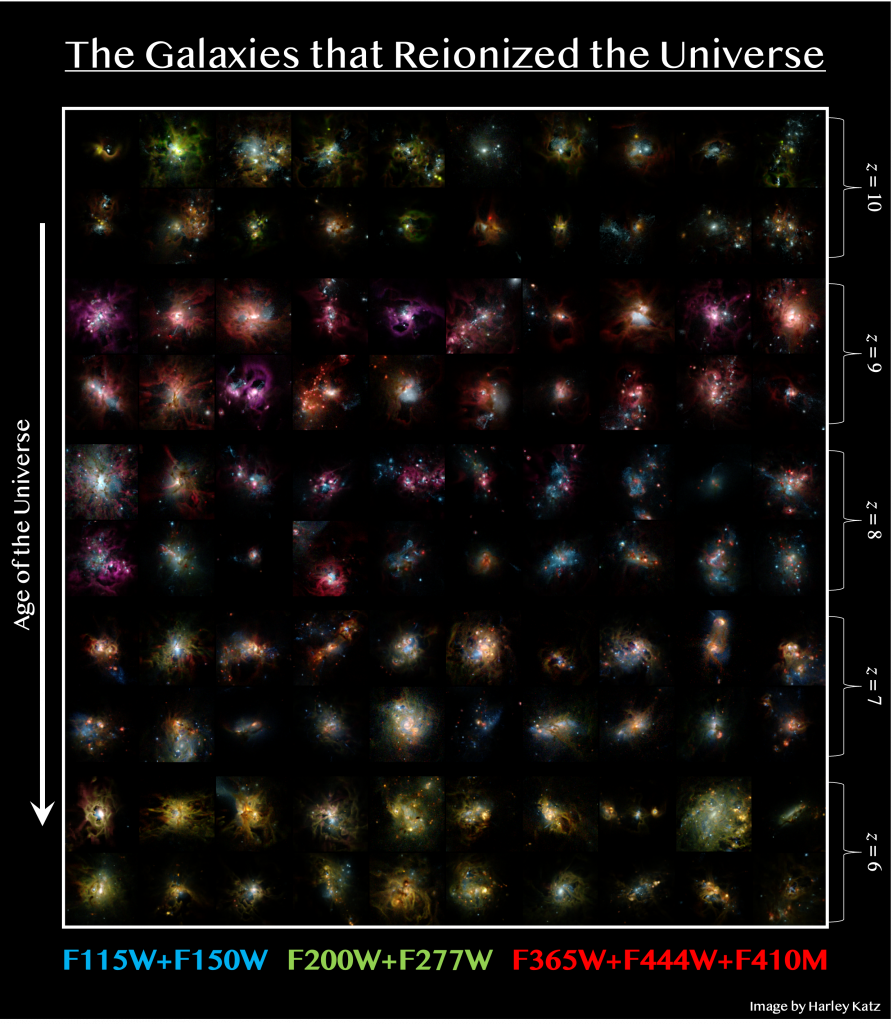We have now made available a catalog of selected galaxies from the SPHINX20 simulation. The catalog can be found here. It contains galaxies featuring the highest star formation rates in the simulation, and hence most luminous and comparable to those detected at high redshifts by the James Webb Telescope. The catalog covers simulation snapshots at redshifts 10, 9, 8, 7, 6, 5, and the last one of the simulation at 4.64, and contains a total of 1,380 galaxies. Each galaxy is viewed from 10 different directions, resulting in about 14 thousand mock images and spectra of the stellar continuum, nebular continuum, and 52 nebular emission lines, as well as intrinsic properties of the galaxies. The data release website also provides basic python notebooks to read and manipulate the data.
We have submitted an accompanying paper for publication with Open Journals, containing detailed information on the data release as well as various use-case demonstrations and comparisons with high-redshift observations. The paper, Katz et al., appears on arXiv today.
The image below, taken from the data release paper, shows RGB images of some of the SPHINX galaxies making the strongest contributions to reionization, i.e. with the highest ionizing luminosities, and how this type of galaxies evolves with redshift in NIRCam filter luminosities, as indicated at the bottom.

